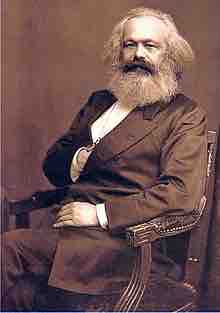Throughout the history of economic theory, several methods for approaching the topic are noteworthy enough, and different enough from one another, to be distinguished as particular 'schools of economic thought. ' While economists do not always fit into particular schools, especially in modern times, classifying economists into a particular school of thought is common.
Mainstream modern economics can be broken down into four schools of economic thought:
Classical economics, also called classical political economy, was the original form of mainstream economics in the 18th and 19th centuries. Classical economics focuses on both the tendency of markets to move towards equilibrium and on objective theories of value. Neo-classical economics derives from this school, but differs because it is utilitarian in its value theory and because it uses marginal theory as the basis of its models and equations. Anders Chydenius (1729–1803) was the leading classical liberal of Nordic history. A Finnish priest and member of parliament, he published a book called The National Gain in 1765, in which he proposed ideas about the freedom of trade and industry, explored the relationship between the economy and society, and laid out the principles of liberalism. All of this happened eleven years before Adam Smith published a similar and more comprehensive book, The Wealth of Nations. According to Chydenius, democracy, equality and a respect for human rights formed the only path towards progress and happiness for the whole of society.
Marxian economics descends directly from the work of Karl Marx and Friedrich Engels. This school focuses on the labor theory of value and what Marx considers to be the exploitation of labor by capital. Thus, in this school of economic thought, the labor theory of value is a method for measuring the degree to which labor is exploited in a capitalist society, rather than simply a method for calculating price.

Marxism
The Marxist school of economic thought comes from the work of German economist Karl Marx.
Keynesian economics derives from John Maynard Keynes, and in particular his book, The General Theory of Employment, Interest and Money (1936), which ushered in contemporary macroeconomics as a distinct field. The book analyzed the determinants of national income, in the short run, during a period of time when prices are relatively inflexible. Keynes attempted to explain, in broad theoretical detail, why high labor-market unemployment might not be self-correcting due to low "effective demand," and why neither price flexibility nor monetary policy could be counted on to remedy the situation. Because of its impact on economic analysis, this book is often called "revolutionary. "

Keynesian Economics
John Maynard Keynes (right), was a key theorist in economics.
A final school of economic thought, the Chicago School of economics, is best known for its free market advocacy and monetarist ideas. According to Milton Friedman and monetarists, market economies are inherently stable so long as the money supply does not greatly expand or contract. Ben Bernanke, current Chairman of the Federal Reserve, is among the significant public economists today that generally accepts Friedman's analysis of the causes of the Great Depression.